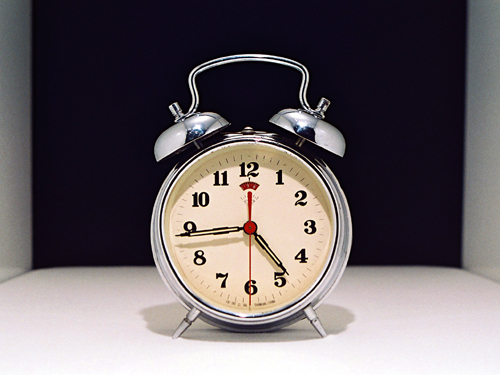As an event planner or a conference organizer you know all about the importance of timing and keeping to a schedule. Unfortunately though, not everyone is as much of a stickler to a schedule as you are.
Ideally a professional speaker will have practised and perfected her presentation so that she knows exactly how long it will take her to complete it, and she will do her best to stick to your event schedule. However, there are exceptions to every rule – and the thing about professional speakers is, well, they like to talk!
Some things you can’t control. If a presentation begins late due to a scheduling conflict or technical difficulty, it’s likely that it will run late as well. Other times there may be an unanticipated number of audience questions and a Q&A session may run unexpectedly long. Luckily there are a number of things that you – the event planner – can do, to help keep a presentation on time and on track. Here are three tips to help your speaker stick to the schedule.
Photo of clock by Jorge Barrios via Wikimedia Commons.Tip No. 1: Inform your speaker.
If you want your speaker to stay on schedule, make certain he knows exactly how much time he has to make his presentation. And be as specific as possible. If there is one hour allotted for the presentation, make clear whether that time includes time for audience questions, or if there will be time for a question and answer period after the 60 minutes is up. If the hour does include time for questions, explain how you would like that time broken down. For instance, tell your speaker he has 40 to 45 minutes of talking time and 15 to 20 minutes for questions.
The more your speaker knows about how you would like him to prioritize his time, the better the chance he will stick to your schedule.
Another thing to keep in mind: If your speaker’s presentation begins late, because of scheduling conflicts, technical difficulties or waiting on latecomers in the audience, be certain to let him know if he is to continue on with the originally planned presentation (which will now, of course, run late) or if you’d like him to modify his speech to still wrap up at the original time. It comes down to what is more important to you – that your audience gets the most out of the speaker and his message or that your event runs on time.
Tip No. 2: Provide a clock.
Not all speaking venues have a clock that is easily viewable from the speaker’s vantage point, so it’s a good idea to provide one of your own. Purchase an inexpensive mini alarm clock and place it somewhere the speaker will be able to see it easily: on the lectern if he is using one, on a small table on stage, or even on the stage floor. The clock should be small enough that it isn’t noticeable or distracting to the audience, but large enough that the speaker can see it from a distance.
Tip No. 3: Develop time signals.
Even if you provide your speaker with a clock, she may get so wrapped up in her presentation that she forgets to regularly check the time. So it’s also a good idea to develop some signals to let the speaker know when she is nearing the end of her time limit.
Try to arrange a seat for yourself in the first row of the audience – or even off to the side of the stage – and make sure your speaker knows where you will be located. Depending on the length of the presentation, of course, you may want to let your speaker know when she has 10 minutes, five minutes and two minutes left before her time is up.
To do so, make coloured cue cards – coloured construction paper will work well for these – with the corresponding numbers on them. It doesn’t really matter what colour they are, but it matters that your speaker knows what each colour means. For example, you may want to hold up a piece of green construction paper with the number 10 on it when there are 10 minutes left to the presentation time; a yellow piece of construction paper with the number five on it when there are five minutes left; and a red piece of construction paper with the number two on it when there are only two minutes left and it’s time for the speaker to start wrapping things up. This system will also work well during Q&A sessions.
You may want to ask your speaker to acknowledge that she’s seen your cue cards by responding with a cue of her own, a slight nod of her head for example. This way you know she’s seen your cue card and you can put it back down.
By communicating with your speaker and adopting these three easy time-management strategies, your speaker is sure to stay on track and your event is certain to run on time.
Share your time-keeping strategies with us here or on the Inspiring Speakers Facebook page. We’d love to hear what you have to say. To your scheduling success!



